| |
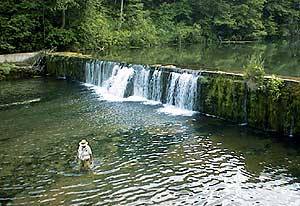 Bud
McCullough, the hatchery manager, said they begin the hatching process
for the fish currently in the hatchery around the first of November. They
begin with 450 female rainbow trout, and gently assist the spawning process
by squeezing the eggs out of them. They do the same to remove the milt
from 150 male rainbow trout, and then bring the eggs and the milt together
in a water-filled container. Once fertilized, the trout eggs become embryos,
and begin growing. This process continues weekly until late winter, when
they have enough tiny fingerlings to supply a future generation of trout
to the spring-fed stream at Rockbridge. Bud
McCullough, the hatchery manager, said they begin the hatching process
for the fish currently in the hatchery around the first of November. They
begin with 450 female rainbow trout, and gently assist the spawning process
by squeezing the eggs out of them. They do the same to remove the milt
from 150 male rainbow trout, and then bring the eggs and the milt together
in a water-filled container. Once fertilized, the trout eggs become embryos,
and begin growing. This process continues weekly until late winter, when
they have enough tiny fingerlings to supply a future generation of trout
to the spring-fed stream at Rockbridge.
Inside the hatchery:
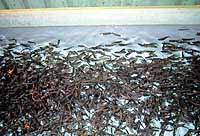 |
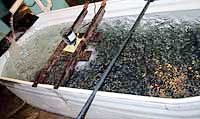 |
| 1 These rainbow fingerlings
are 3 or 4 weeks old, living in tanks inside the hatchery. The hatchery
is in the basement of the large metal building you can see next to
the upper fish ponds by N Highway, just before the turn to Rockbridge. |
2 Water
coming in at left hits a splash board, to let nitrogen gas dissolved
in the water to pass into the air. Nitrogen gas does not harm most
local fish, but it can kill the baby rainbow trout, which are not
native to this area. |
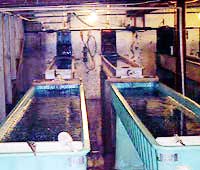 |
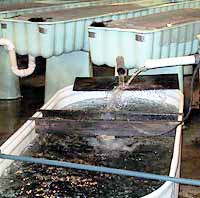 |
| 3 Tanks full
of fingerlings, with well water coming in from the back and being
aerated from tank to tank. Well water is used because it is free of
the various parasites and bacteria present in the creek or the spring
water. |
4 Another
view of water hitting the splash board on its way into the tank. The
natural habitat of these fish is fast-flowing mountain streams. The
natural agitation of the water there dislodges nitrogen gas bubbles
in the same way as the splash board. |
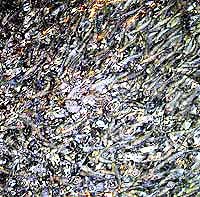 |
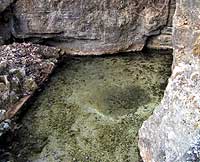 |
| 5 Because
so many fingerlings are kept together in a tank, they can pass
diseases from one to all, just like in groups of humans. Also like
humans, as they grow they become hardier and less likely to be damaged
by their "foreign" environment. |
6 By the time
they go outside, the fingerlings will be strong enough to live in
spring water. The water in their ponds comes from Rockbridge Spring.
Its flow is 12,345,000 gallons per day. |
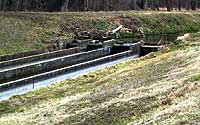 |
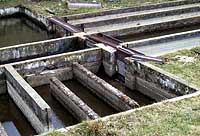 |
| 7 Here a channel carrying
water from the spring enters the upper ponds. You can see the bank
of Spring Creek to the rear. |
8 The channel is a sluice,
lined with concrete, and there are metal gates that control how much
water enters the complex system of tanks. |
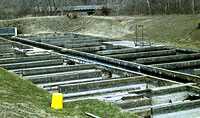 |
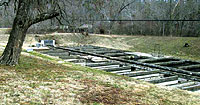 |
| 9 Gravity does the work
as the water flows downstream through the concrete tanks. |
10 The end of the upper
ponds. From here the water flows down into Spring Creek, and then
under the bridge. |
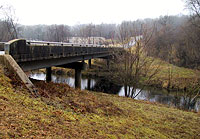 |
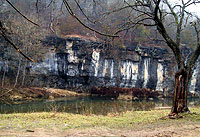 |
| 11 Spring Creek flows
under the N Highway bridge. |
12 And into the fishing
pond, with the pretty bluffs behind it |
|
|


